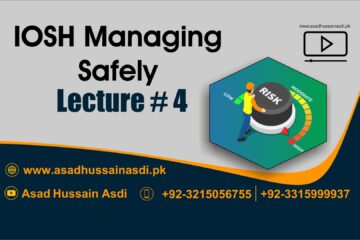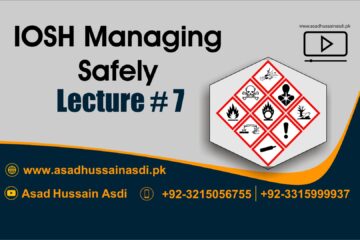ProQual Level 2 Certificate in Computerised Accounting Course in Islamabad || Registration Open
Registration Open= +92-3315999937, +92- 3215056755 (WhatsApp Only)
Introduction
This qualification is appropriate for anyone using computerised accounting software in a
business context.
Topics include double entry bookkeeping, opening balances and journals, sales and
purchase ledgers, bank and petty cash transactions, trial balance, data security, trade and
settlement discounts, credit control, private use, fixed assets and budget control, producing
sales invoices and credit notes.
The awarding organisation for this qualification is ProQual Awarding Body and the
regulatory body is the Office of Qualifications and Examinations Regulation (Ofqual). The
specification for these qualifications has been approved by the Welsh Government for use
by centres in Wales.
Entry Requirements
There are no formal entry requirements for this qualification, however, candidates may
benefit from the achievement of ProQual Level 2 Award in Accounting Knowledge. Centres
should carry out an initial assessment of candidate skills and knowledge to identify any gaps
and help plan the assessment.
Qualification Profile
Qualification title ProQual Level 2 Certificate in Computerised Accounting
Ofqual qualification number 603/1263/4
Level 2
Total Qualification Time 50 hours (26 GLH)
Assessment
Pass or fail
Internally assessed and verified by centre staff
External quality assurance by ProQual verifiers
Qualification start date 27/3/2017
Qualification end date
Qualification Structure
Candidates must complete ONE Mandatory unit:
H/615/4945 Computerised Accounting
ProQual, March 2017
Level 2 Certificate in Computerised Accounting
4
Centre Requirements
Centres must be approved to offer this qualification. If your centre is not approved please
complete and submit form ProQual Additional Qualification Approval Application.
Staff
Staff delivering this qualification must be appropriately qualified and occupationally
competent.
Assessors/Internal Quality Assurance
For each competence-based unit centres must be able to provide at least one assessor and
one internal quality assurance verifier who are suitably qualified for the specific
occupational area. Assessors and internal quality assurance verifiers for competence-based
units or qualifications will normally need to hold appropriate assessor or verifier
qualifications, such as:
- ProQual Level 3 Certificate in Teaching, Training and Assessing
- Award in Assessing Competence in the Work Environment
- Award in Assessing Vocationally Related Achievement
- Certificate in Assessing Vocational Achievement
- Award in the Internal Quality Assurance of Assessment Processes and Practices
- Certificate in Leading the Internal Quality Assurance of Assessment Processes and
Practices
Support for Candidates
Materials produced by centres to support candidates should:
- enable them to track their achievements as they progress through the learning
outcomes and assessment criteria;
- provide information on where ProQual’s policies and procedures can be viewed;
- provide a means of enabling Internal and External Quality Assurance staff to
authenticate evidence
ProQual, March 2017
Level 2 Certificate in Computerised Accounting
5
Assessment
Candidates must demonstrate the level of knowledge and competence described in the unit.
Assessment is the process of measuring a candidate’s knowledge and understanding against
the standards set in the qualification.
Assessment guidance is included to assure consistency.
Each candidate is required to produce evidence which demonstrates their achievement of
all of the learning outcomes and assessment criteria for each unit.
Evidence can include: – assignments/projects/reports
– worksheets
– portfolio of evidence
– record of oral and/or written questioning
– candidate test papers
Learning outcomes set out what a candidate is expected to know, understand or be able to
do.
Assessment criteria specify the standard a candidate must meet to show the learning
outcome has been achieved.
Learning outcomes and assessment criteria for this qualification can be found from page 7
onwards.
Internal Quality Assurance
An internal quality assurance verifier confirms that assessment decisions made in centres
are made by competent and qualified assessors, that they are the result of sound and fair
assessment practice and that they are recorded accurately and appropriately.
Adjustments to Assessment
Adjustments to standard assessment arrangements are made on the individual needs of
candidates. ProQual’s Reasonable Adjustments Policy and Special Consideration Policy sets
out the steps to follow when implementing reasonable adjustments and special
considerations and the service that ProQual provides for some of these arrangements.
Centres should contact ProQual for further information or queries about the contents of the
policy.
ProQual, March 2017
Level 2 Certificate in Computerised Accounting
6
Results Enquiries and Appeals
All enquiries relating to assessment or other decisions should be dealt with by centres, with
reference to ProQual’s Enquiries and Appeals Procedures.
Certification
Candidates who demonstrate achievement of the qualification will be awarded a certificate
giving the full qualification title –
ProQual Level 2 Certificate in Computerised Accounting
Claiming certificates
Centres may claim certificates for candidates who have been registered with ProQual and
who have successfully completed the requirements for a qualification. All certificates will be
issued to the centre for successful candidates.
Replacement certificates
If a replacement certificate is required a request must be made to ProQual in writing.
Replacement certificates are labelled as such and are only provided when the claim has
been authenticated. Refer to the Fee Schedule for details of charges for replacement
certificates.
ProQual, March 2017
Level 2 Certificate in Computerised Accounting
7
Learning Outcomes and Assessment Criteria
Computerised Accounting
Learning Outcome – The learner will: Assessment Criterion – The learner can:
1 Understand the principles of Manual
Accounting
1.1 Describe the meaning of Manual Accounting terms:
Sales, Purchase, Expenses, Receipts, Payments,
Assets and Liabilities
1.2 Describe the meaning of terms:
Business Entity, Dual Aspect, Money Measurement,
Historic Cost
1.3 Explain what is meant by the Accounting Equation
1.4 Describe what is meant by the Double Entry
Bookkeeping terms:
Assets, Liabilities, Income, Expenditure and Capital
1.5 Explain the terms Debit and Credit in reference to
Double Entry Bookkeeping
1.6 Describe the layout of a T Account
1.7 Describe the Integrated Ledger terms:
Sales Ledger, Purchase Ledger, Nominal Ledger,
Cash Book and Journal
1.8 Identify :
(a) the difference between Prime Documents
and Primary Accounting Records
(b) how they relate to Double Entry Accounts in
relation to sales of goods
1.9 Explain how a T Account is formed
1.10 Identify on which side of the T Account the:
(a) purchase
(b) sale
of goods on credit would be entered
1.11 Explain the key function of:
- Sales Ledger Control
- Purchase Ledger Control
1.12 Identify each element of the PEARLS acronym and
indicate whether each element is a Cost, Asset,
Revenue, Liability or Capital
1.13 Describe the function of the Nominal Ledger
1.14 Describe the function of the Trial Balance
1.15 Describe the meaning of the terms:
- Profit and Loss
- Cost of Sales
- Overheads and Expenses
- Balance Sheet
1.16 Describe how the manual accounts fit into
accounting software
ProQual, March 2017
Level 2 Certificate in Computerised Accounting
8
Learning Outcome – The learner will: Assessment Criterion – The learner can:
2 Be able to install and set up a
Computerised Financial System
2.1 Note the difference between cloud software and
desktop software
2.2 Install computerised financial software
2.3 Set up a new company, accurately enter:
Company Name, Address, Financial Year,
Programme Date, VAT Number and Scheme
2.4 Back up data to a secure location
2.5 Restore data from a secure location
3 Be able to Code within Accounting
Software to account for VAT,
different transaction types,
customers and suppliers
3.1 Note the difference between VAT rates
3.2 Create suitable and appropriate nominal accounts
3.3 Create customer and supplier account codes and
records
3.4 Create customer and supplier account codes and
records, accurately enter:
Company Name, Address, Nominal Code, Contact
3.5 Make simple corrections to data to change or alter:
VAT Code, Nominal Code, Customer and Supplier
Codes
3.6 Create a chart of accounts or form nominal reports
for financial reporting
4 Be able to record Opening Balances
and Use Journals
4.1 Enter Opening Debtor Balances, accurately enter:
Opening Debtor information, Tax Code, Date,
Nominal Code, Reference and Amount
4.2 Enter Opening Creditor Balances, accurately enter:
Opening Creditor information, Tax Code, Date,
Nominal Code, Reference and Amount
4.3 Describe the circumstances in Journals would be
entered
4.4 Process Journals for four types of transactions:
Fixed Asset, Wages/Salaries, Owners Goods Used,
Capital Introduced
4.5 Describe how Nominal Ledger Balances are posted
4.6 Explain the purpose of the Suspense Account
4.7 Enter an initial Opening Trial Balance
5 Be able to record Customer Sales
Invoices and Credit Notes
5.1 Record information from invoices sent to
customers, accurately enter:
Document Date, Nominal Code, Document
Reference, Amount, VAT Amount
5.2 Enter credit notes sent to customers, accurately
enter:
Document Date, Nominal Code, Document
Reference, Amount, VAT Amount
ProQual, March 2017
Level 2 Certificate in Computerised Accounting
9
Learning Outcome – The learner will: Assessment Criterion – The learner can:
5.3 Produce appropriate report for customer invoices
over a date range detailing:
Gross Amount, Net Amount, VAT Amount
5.4 Produce appropriate report for customer credit
notes over a date range detailing:
Gross Amount, Net Amount, VAT Amount
6 Be able to record Supplier Purchase
Invoices and Credit Notes
6.1 Record information from invoices received from
suppliers, accurately enter:
Document Date, Nominal Code, Document
Reference, Amount, VAT Amount
6.2 Record information from credit notes received from
suppliers, accurately enter:
Document Date, Nominal Code, Document
Reference, Amount, VAT Amount
6.3 Produce an appropriate report for supplier invoices
over a date range detailing:
Gross Amount, Net Amount, VAT Amount
6.4 Produce an appropriate report for supplier credit
notes over a date range detailing:
Gross Amount, Net Amount, VAT Amount
7 Be able to Control Money : the Bank
Account; enter Receipts and
Payments, create Reports
7.1 Identify an opening bank account balance and enter
it into the software
7.2 Record receipts made from customers and paid into
the bank account, accurately enter:
Customer, Date, Amount, Allocate in Full, Allocate
in Part, Allocate Credit Notes,
and enter a payment on account
7.3 Enter payments made to suppliers and paid out of
the bank account, accurately enter:
Supplier, Date, Amount, Allocate in Full, Allocate in
Part, Allocate Credit Notes,
and enter a payment on account
7.4 Produce appropriate report for customer receipts
over a date range:
- Day Book Reports – detailing Customer,
Date, Reference, Amount Paid
- Customer Statements – detailing amounts
outstanding over a given date range
7.5 Produce appropriate report for supplier payments
over a date range:
- Day Book Reports – detailing Supplier, Date,
Reference, Amount Paid
7.6 Produce a supplier remittance detailing amount
paid over a given date range:
- Supplier Remittance
ProQual, March 2017
Level 2 Certificate in Computerised Accounting
10
Learning Outcome – The learner will: Assessment Criterion – The learner can:
8 Be able to record Non Credit Bank
Transactions, Bank Reconciliation
8.1 Enter bank payments and bank receipts not relating
to customers or suppliers:
Wages, loans, direct debits, standing orders,
payments to HMRC
8.2 Match items on the bank statement to transactions
in the computer bank account record over a given
date range
8.3 Mark the transactions as reconciled
8.4 Produce bank reconciliation reports:
- Reconciled transactions
- Un-Reconciled transactions
9 Understand an opening petty cash
balance : Entering an opening balance,
Petty Cash Transactions
9.1 Enter an opening petty cash balance into the
software
9.2 Enter simple petty cash transactions
9.3 Enter petty cash payments with VAT, Correct Date,
Nominal Code, Gross Amount and VAT Amount
9.4 Enter a range of petty cash payments with and
without VAT, Correct Date, Nominal Code, Gross
Amount and VAT Amount
10 Know how to balance accounts and
produce reports : The Trial Balance,
Nominal Ledger Reports and other
reports
10.1 Produce a trial balance as at a given date or period
10.2 Produce nominal reports using correct selection
criteria and parameters, for example: Nominal
Activity, Nominal Day Books, Audit Trail
10.3 Produce reports on information:
- Customer Account Balances – Aged Debtor
Reports, Customer Address
- Supplier Account Balances – Aged Creditor
Reports, Supplier Address
11 Understand Data Security Risks, Data
Protection and Safe Data Storage
11.1 Identify data security risks when running a
computerised accounting system
11.2 Identify how to produce data when running a
computerised accounting system
11.3 Identify how to store data when running a
computerised accounting system in line with
current legislation






















